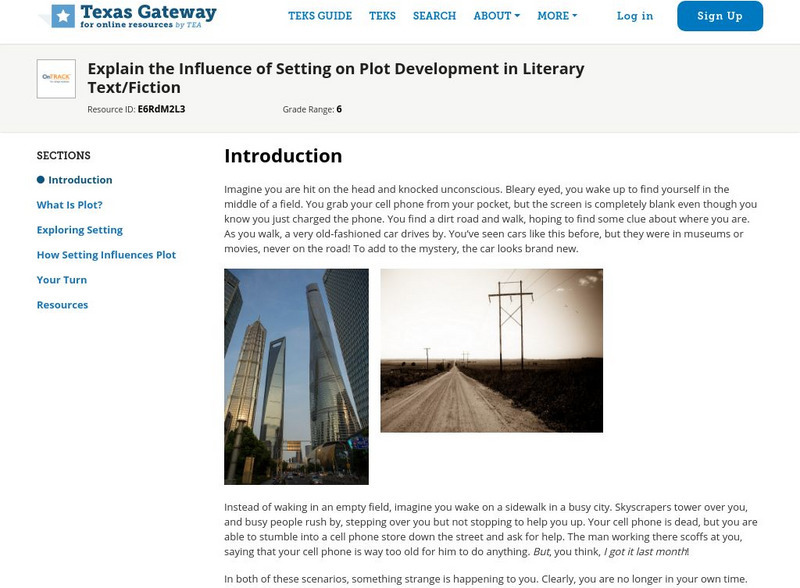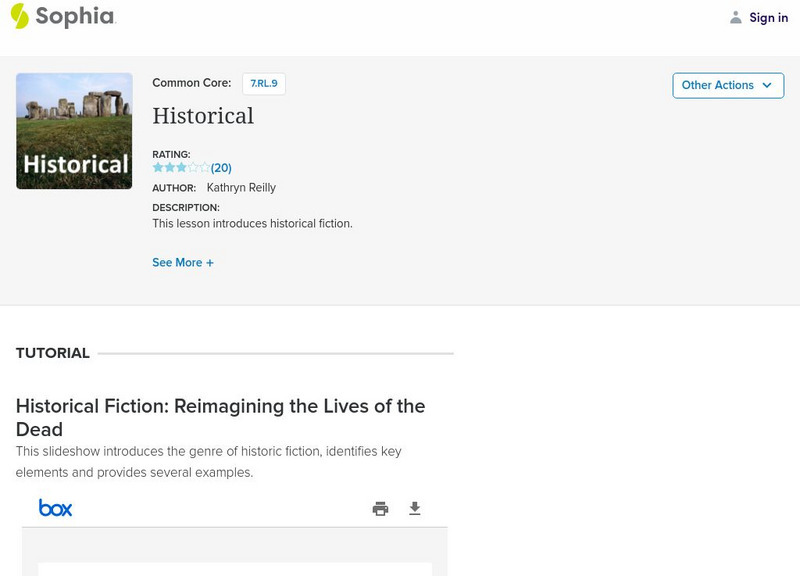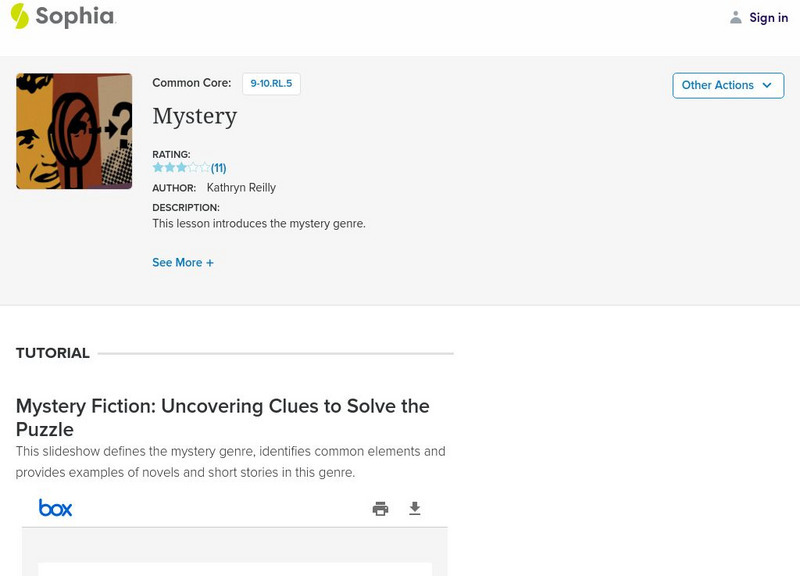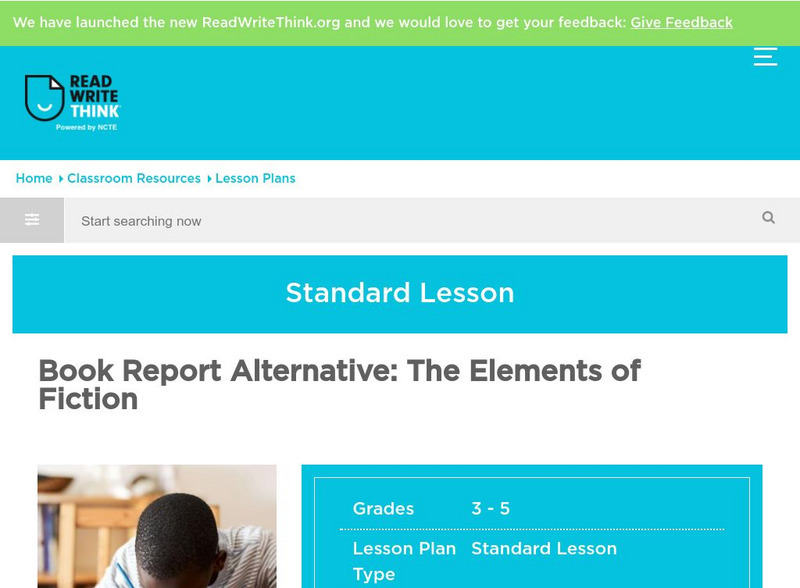Curated OER
A QUESTION
Students engage in scientifically oriented questions. They give priority to evidence, draw conclusions/formulate explanations and connect/evaluate explanations with scientific knowledge. Students communicate and justify proposed...
Curated OER
Wolves
Students utilize several different sources to research wolves, after completing the K-W-L process.
Curated OER
Writing From Experience (Grades 7-12)
Students brainstorm in preparation for writing an expressive essay. They review their responses to 'Writing from Experience' and write notes and brainstorm other ideas or details for their essays. They take turns illustrating their life...
Curated OER
Patriots v. Loyalists
Students consider how colonial citizens chose sides in the American Revolution. In this Revolutionary War lesson, students role play Loyalists, Patriots, and undecideds in a classroom simulation. Students research their positions so that...
Curated OER
Silent Spring
Students read background information about Rachel Carson found on the listed website links. They analyze and answer questions about her work and how it is linked to science then they research pesticide usage and alternative methods.
Curated OER
Color My World
Fourth graders write poems using color to describe their feelings and environment. After viewing a sample student poem imbedded in this plan, 4th graders utilize The Student Writing Center educational software program to type their poem.
Curated OER
Author, Author!
Third graders, in groups, select and research a favorite studenT author or illustrator. They answer questions about the author, conduct research and prepare a PowerPoint presentation with their findings.
Curated OER
The Human Jigsaw
Fourth graders, using Thomas Paine's "The Crisis, No. 1" from The American Crisis, form a human jigsaw.
Annenberg Foundation
Annenberg Learner: Interactives: Elements of a Story
Explore the elements of a story using the well-known Cinderella story as source material. Learn about setting, character, sequence, exposition, conflict, climax, and resolution.
Georgia Department of Education
Ga Virtual Learning: Ninth Literature and Composition: Short Stories
This lesson provides and introduction to a short story unit. It focuses the lessons and morals taught by short stories and the use of literary elements in fiction. I provides a list of essential questions.
Department of Defense
Do Dea: Story, Identity, Unity
Delve into the art of storytelling in this self-guided unit. Multiple topics are covered such as literary genres, the 7 elements of fiction, figurative language, theme, characterization, etc. At the end of the unit, write your own flash...
Georgia Department of Education
Ga Virtual Learning: Contemporary Literature: The Modern Short Story
This lesson is an introduction to the modern short story including defining the short story, how the modern short story differs from the classic short story, the elements of a short story, and what is to be expected in this unit.
Annenberg Foundation
Annenberg Learner: Literary Visions
Twenty-six half hour videos on literary analysis for high school students that feature authors, scholars, actors and noted critics. Topics include The Art of the Essay, Setting and Character in Short Fiction, Responding to Literature and...
Texas Education Agency
Texas Gateway: Explain Influence of Setting on Plot Development in Literary Text
In this lesson, students will review two elements of fiction, setting and plot, and learn how the setting influences the plot in stories.
Texas Education Agency
Texas Gateway: Analyze the Central Characters in Literary Text/fiction
In this lesson, students will learn some ways that writers reveal the complexity of their characters. By closely analyzing one author's characters, they will come to see how their words, actions, and interactions with one another can...
Texas Education Agency
Texas Gateway: Understanding and Analysis of Literary Text: Meter and Rhyme
OnTRACK English II Reading, Module 3, Lessons 1-12, and Practice Lessons 1-3. Students understand, make inferences and draw conclusions about the structure and elements of poetry, drama, fiction, and literary non-fiction, and provide...
Sophia Learning
Sophia: Science Fiction
This slideshow introduces the genre of science fiction. It presents background information, common elements, common themes, pop movies (from books) showing diverse examples, and three specific examples: "Time Machine," "I, Robot," and...
Sophia Learning
Sophia: Historical Fiction
This slideshow lesson features the genre of historical fiction. It provides background information, common elements, literary examples, and practice. The practice consists of viewing pictures of Stonehenge and the Pyramids and thinking...
Other
Lifestream Center: Lessons: Literary Concepts: Elements of a Story
This site offers a basic understanding of the elements of a story. It clearly defines each literary term.
Texas Education Agency
Texas Gateway: Analyze Development of Plot Through Characters in Literary Text
[Accessible by TX Educators. Free Registration/Login Required] Often characters are a driving force behind the plot. In this lesson, students will learn how complex, multilayered characters contribute to the development of a story's plot...
Sophia Learning
Sophia: Mystery
This slideshow focuses on the genre of mystery; it provides background, compares and contrasts mystery and crime fiction, lists the common elements of mystery, and provides literary examples with Nancy Drew and Agatha Christie novels.
ReadWriteThink
Read Write Think: Book Report Alternative: The Elements of Fiction
Analyzing a book takes the form of creating their own when students complete this activity. The stated goal is to help students "Read like writers." Includes link to a template for student use.
Annenberg Foundation
Annenberg Learner: Literary Visions
A series of 24 instructional videos, each about 30 minutes in length, designed to teach literary analysis. Topics include Responding to Literature, The Elements of Short Fiction, Tone and Style in Short fiction, The Elements of Poetry,...






















